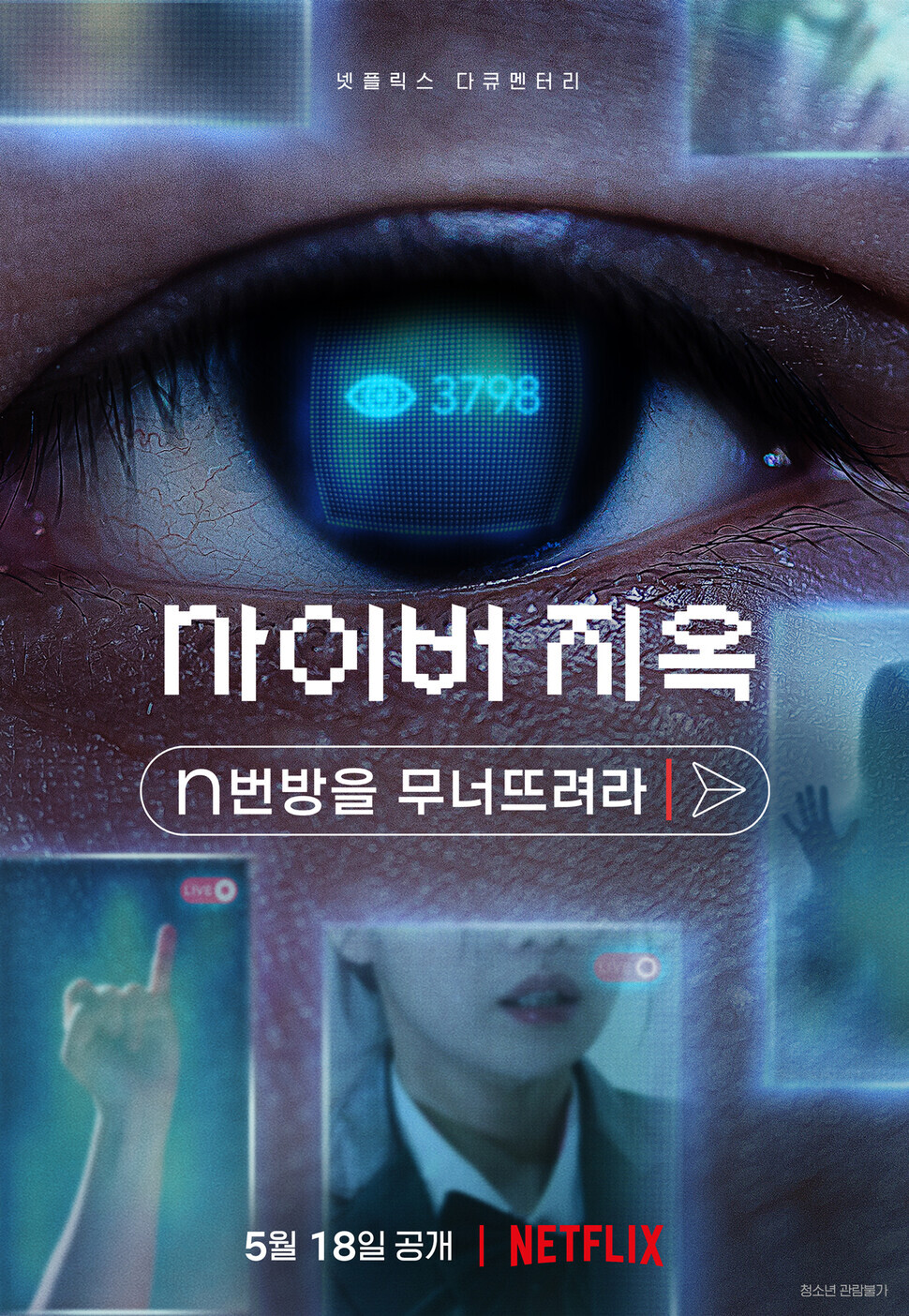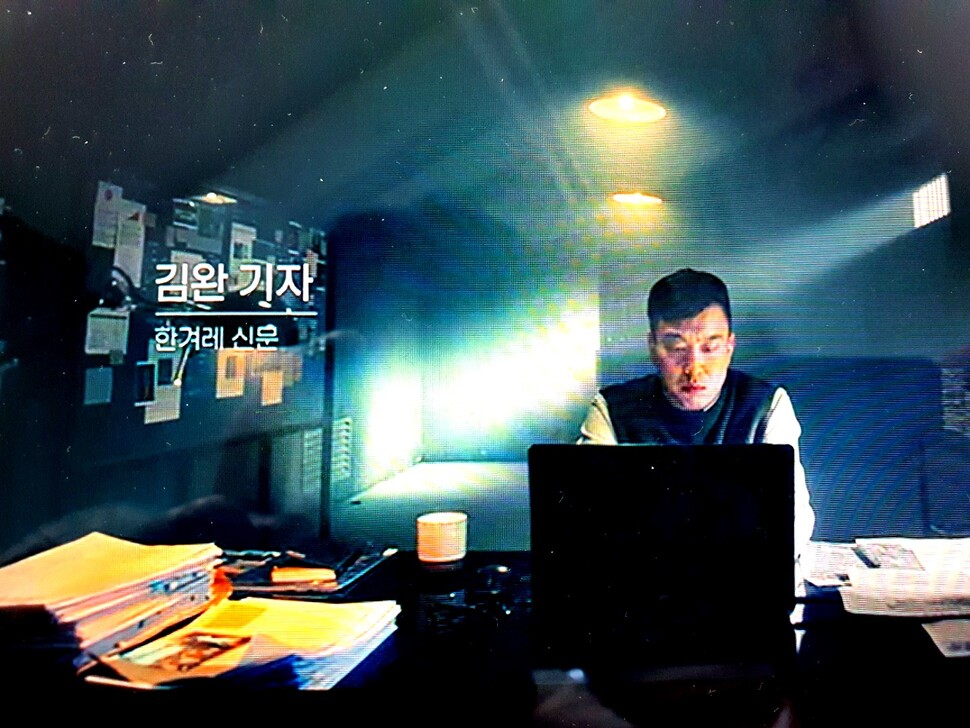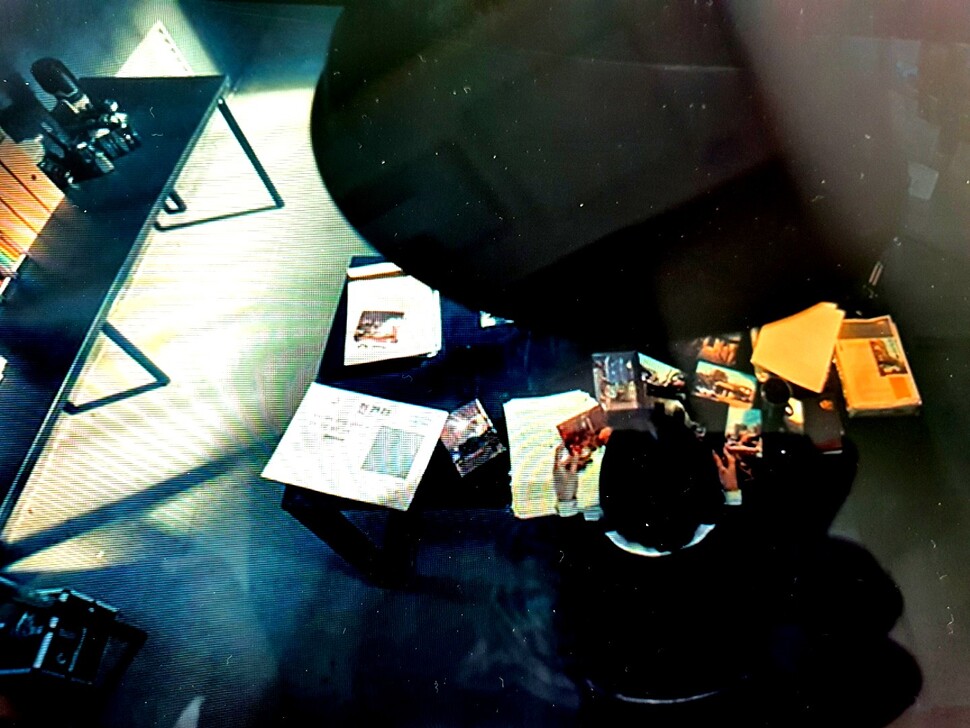hankyoreh
Links to other country sites 다른 나라 사이트 링크
[Interview] “Cyber Hell” director has message for cyber sex predators: You will be caught

“Cyber Hell: Exposing an Internet Horror,” a documentary exploring the Nth Room case, premiered on the global streaming service Netflix on Wednesday. Since then, it has been drawing major attention, reaching the No. 2 spot on the South Korean rankings with its take on an incident that sent major shockwaves through society when the story broke.
“Cyber Hell” examines the cybercrimes committed in the Nth Room through interviews with 24 of the people who investigated it, including journalists, producers and police. Among those providing their vivid recollections for the camera are the members of “Team Flame,” which first investigated the case, as well as Hankyoreh reporters Kim Wan and Oh Yeon-seo, who first reported the story, and members of the police’s cyber investigation team.
In an interview shared by Netflix, the documentary’s director Choi Jin-seong said that his intention with the film is to show that “criminals are going to be caught, no matter how much they may try to hide.”
“I’d like to send any perpetrators out there the same message: You will be caught,” he added.
The following is the full text of the interview shared by Netflix.
Q: What kind of work is “Cyber Hell: Exposing an Internet Horror”?A (Choi Jin-Seong): In the past, the true crime documentaries found on Netflix have tended to be about crimes with a long history behind them, things like serial murders, psychopaths, or sex crimes. But “Cyber Hell” documents a new form of cyber sex crime that is happening for the first time in human history.
Q: Could you talk about what led you to come up with “Cyber Hell,” and about the process and how it got started?A: Before the early 2020s, I’d started to hear murmurs about bizarre sorts of crimes that had been unimaginable before. I belatedly learned about these brutal crimes that had been taking place in the shadows of our day-to-day lives — things that are difficult for ordinary people to comprehend, like sexually exploitive videos, Telegram, hacking, cryptocurrency, or organized crime taking place without face-to-face contact.
So I met with Team Flame, the group of citizens that were the first to investigate the incident, and I talked to the reporters who first broke the story in the press. Through my conversations with them, I learned that the crimes in the Nth Room were more systematic than I’d realized, and also more horrific and brutal. That made me want to make a documentary about it.
Q: There are vast amounts of information about the Nth Room incident out there, in the form of news stories, records, columns, and so forth. What were your standards for examining those and sorting them out?
A: In the beginning, it was difficult to get any sense of the reality of the Nth Room or the Baksa Room. I’d never been inside them myself, and the situation had been going on for some time, so the first thing I had to do was to find the truth about what had gone on in there.
The things that had already been made public in the press weren’t enough to establish the facts. I was able to get information about the Nth Room and Baksa Room that the journalists and the Team Flame members had assembled during their investigations.
Anything that could identify the victims had been redacted, and that information allowed me to investigate the scenes of the online crimes. It was a painful but necessary process.

A: It was important to know who I was going to position as the “protagonists.”
It’s interesting to consider that the people who first started investigating the case were ordinary university students who aspired to become reporters. Working under the “Team Flame” name, they entered the Nth Room, investigated it, and shared what they found with the world.
The incident itself was fascinating, but I also thought it was meaningful that the ones who first started investigating it were ordinary people, and I thought I should make them the central figures.
The documentary is also similar to the film “Spotlight,” in that it’s about investigative journalists searching for the truth. The reporters I met through this work wanted to see the criminals get caught even more than the police did. They went into the Nth Room themselves, met with the victims, and also tried to interview the perpetrators.
In their minds, they were focused on making sure these people were caught, and they were successful. I would venture to say that Korea’s cyber investigation team members are some of the world’s top investigators. They really go the extra mile working online and offline to track down the criminals.
Q: What were your reasons for choosing the approach where you show developments in the case using the format of a mobile phone chat screen?
A: It was crucially important that the Nth Room wasn’t a “classic” sort of crime like the serial murders committed by a Ted Bundy or the sex crimes committed by a Jeffrey Epstein. This was a new type of crime using the latest network technology.
I also wanted the viewers to be able to understand the concept in a meaningful way. I thought the particular nature of the crime would be effectively conveyed to viewers if the incident was presented through social media and online user interfaces — something similar to the movie “Searching.”
I never considered interviewing the victims themselves. I felt like that could end up being a form of secondary victimization.
I thought this sort of screen composition would be a way of communicating the facts of the case that had been gathered through the investigation and interviews and sharing them with viewers in a “cinematic” way.

Q: Watching the documentary feels almost like watching a thriller. Was there a reason behind that choice? What aspects did you put the most work into?
A: I see documentaries as being like theatrical films. In my directing style, I don’t really make distinctions in terms of genre. I always think of it as, “If it isn’t entertaining, what’s the point?”
For the key meaning of the work to be effectively conveyed to viewers, it needs to be entertaining, with “genre” elements. The visuals also need to be eye-catching.
From the early stages of planning the film, I wanted to have it feel like a gripping criminal investigation. I felt like that would be a way of really conveying the specific nature of the crimes featured in the documentary, the struggles of the investigators, and the feelings of sympathy toward the victims.
For the interviews too, we put together sets and lighting that were suited to a crime movie, and we also wanted the editing and music to follow the plot and rhythm of a crime movie. We used monotone animation as a way of showing the brutality of the crimes that the victims suffered in a less direct, more ethical way.
Q: Did you experience any challenges during filming?A: If anything was particularly difficult, it was the feeling that this was a case where a lot of people were victimized, and that we needed to make sure we didn’t do anything that would cause them suffering.
The interviewees had the same kinds of concerns when they agreed to the interviews. It needed to be done in a way that effectively showed the reality of the case without causing pain for the victims. Even though it involves crimes of a sexual nature, we wanted to present it as ethical and in as non-sensationalistic of a way as possible.
Q: Are there any key aspects you would like viewers to focus on when they’re watching?A: Most Korean viewers are going to have at least a little bit of prior knowledge of the Nth Room case. But I think that after watching this documentary, they’re going to realize that the facts they know about the case are just the tip of the iceberg.
The horrors of this case were even worse than people are aware of, and the methods used to commit the crimes were far more complex, intricate, and clever than people realize. Also, the people who investigated the case were much more committed and passionate than people know.
If there’s one message that I want to express to the victims, the investigators, and the viewers through this documentary, it’s that criminals are going to be caught, no matter how much they may try to hide. I’d like to send any perpetrators out there the same message: You will be caught.
By Suh Jung-min, staff reporter
Please direct questions or comments to [english@hani.co.kr]

Editorial・opinion
![[Guest essay] Maybe Korea’s rapid population decline is an opportunity, not a crisis [Guest essay] Maybe Korea’s rapid population decline is an opportunity, not a crisis](https://flexible.img.hani.co.kr/flexible/normal/500/300/imgdb/original/2024/0430/9417144634983596.jpg) [Guest essay] Maybe Korea’s rapid population decline is an opportunity, not a crisis
[Guest essay] Maybe Korea’s rapid population decline is an opportunity, not a crisis![[Column] Can Yoon steer diplomacy with Russia, China back on track? [Column] Can Yoon steer diplomacy with Russia, China back on track?](https://flexible.img.hani.co.kr/flexible/normal/500/300/imgdb/original/2024/0430/1617144616798244.jpg) [Column] Can Yoon steer diplomacy with Russia, China back on track?
[Column] Can Yoon steer diplomacy with Russia, China back on track?- [Column] Season 2 of special prosecutor probe may be coming to Korea soon
- [Column] Park Geun-hye déjà vu in Yoon Suk-yeol
- [Editorial] New weight of N. Korea’s nuclear threats makes dialogue all the more urgent
- [Guest essay] The real reason Korea’s new right wants to dub Rhee a founding father
- [Column] ‘Choson’: Is it time we start referring to N. Korea in its own terms?
- [Editorial] Japan’s rewriting of history with Korea has gone too far
- [Column] The president’s questionable capacity for dialogue
- [Column] Are chaebol firms just pizza pies for families to divvy up as they please?
Most viewed articles
- 1‘We must say no’: Seoul defense chief on Korean, USFK involvement in hypothetical Taiwan crisis
- 2After election rout, Yoon’s left with 3 choices for dealing with the opposition
- 3Why Kim Jong-un is scrapping the term ‘Day of the Sun’ and toning down fanfare for predecessors
- 4First meeting between Yoon, Lee in 2 years ends without compromise or agreement
- 5Two factors that’ll decide if Korea’s economy keeps on its upward trend
- 6Noting shared ‘values,’ Korea hints at passport-free travel with Japan
- 7Under conservative chief, Korea’s TRC brands teenage wartime massacre victims as traitors
- 8AI is catching up with humans at a ‘shocking’ rate
- 9Months and months of overdue wages are pushing migrant workers in Korea into debt
- 10[Guest essay] Maybe Korea’s rapid population decline is an opportunity, not a crisis